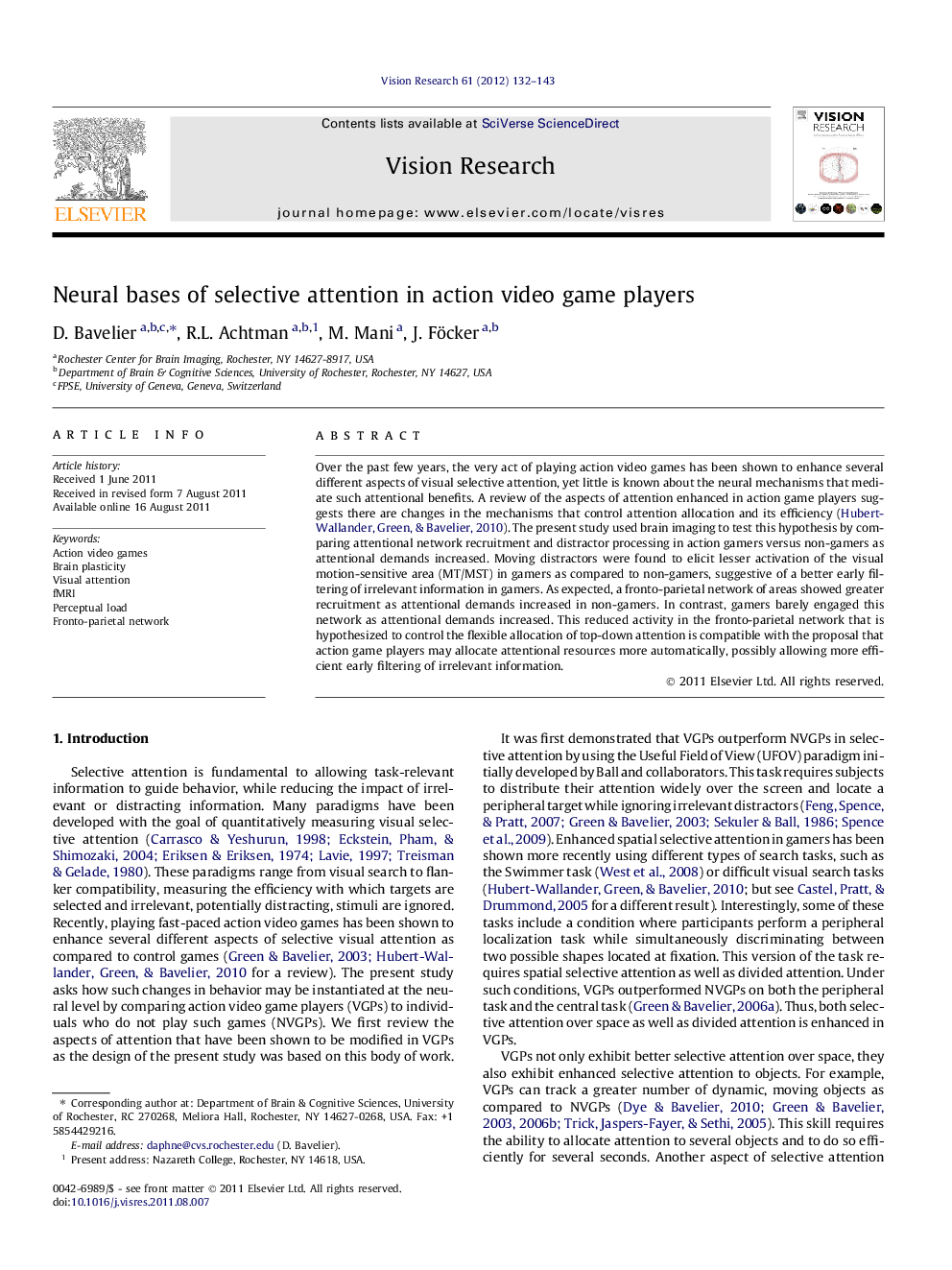| Article ID | Journal | Published Year | Pages | File Type |
|---|---|---|---|---|
| 4034018 | Vision Research | 2012 | 12 Pages |
Over the past few years, the very act of playing action video games has been shown to enhance several different aspects of visual selective attention, yet little is known about the neural mechanisms that mediate such attentional benefits. A review of the aspects of attention enhanced in action game players suggests there are changes in the mechanisms that control attention allocation and its efficiency (Hubert-Wallander, Green, & Bavelier, 2010). The present study used brain imaging to test this hypothesis by comparing attentional network recruitment and distractor processing in action gamers versus non-gamers as attentional demands increased. Moving distractors were found to elicit lesser activation of the visual motion-sensitive area (MT/MST) in gamers as compared to non-gamers, suggestive of a better early filtering of irrelevant information in gamers. As expected, a fronto-parietal network of areas showed greater recruitment as attentional demands increased in non-gamers. In contrast, gamers barely engaged this network as attentional demands increased. This reduced activity in the fronto-parietal network that is hypothesized to control the flexible allocation of top-down attention is compatible with the proposal that action game players may allocate attentional resources more automatically, possibly allowing more efficient early filtering of irrelevant information.
► Neural bases of greater attentional control in action video game players (VGPs). ► Greater suppression of irrelevant information in VGPs. ► Efficient distractor suppression may contribute to VGPs superior attention. ► Lesser recruitment of areas mediating allocation and control of attention in VGPs. ► More automatic and flexible allocation of attentional resources in VGPs.
